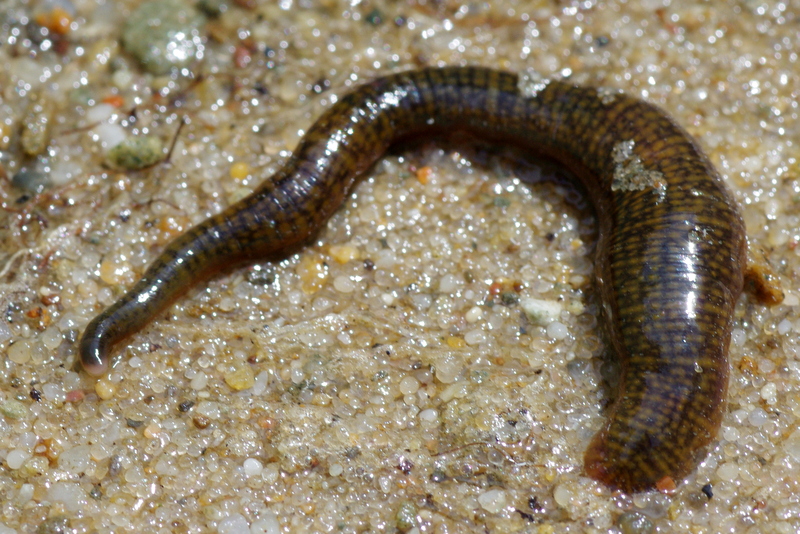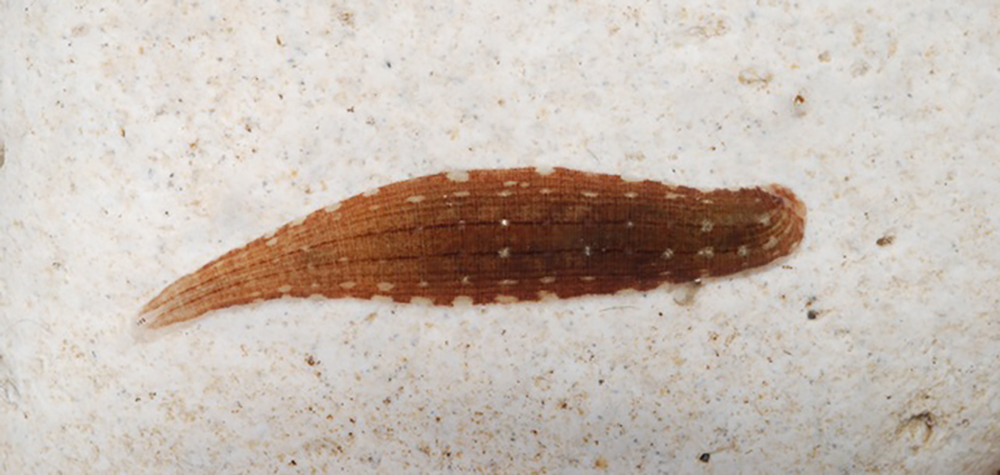Leeches

Erpobdella octoculata Photo: W Walas, CC BY-SA 3.0 https://creativecommons.org/licenses/by-sa/3.0, via Wikimedia Commons
People generally either like or hate leeches – I wouldn’t go as far as to say people love them, apart from those who study them for a living. Despite, or perhaps because of, their bad reputation as bloodsuckers, leeches always prove popular when we have a public stand displaying the macroinvertebrates found in the River Foss; children do like to hold them.
Leeches are soft-bodied, muscular, segmented worms, closely related to earthworms but with a very different appearance and way of moving. Leech bodies are flat, often ribbon-like, the segments not visible but those at either end of the body have been modified to form disc-shaped attachment suckers, for locomotion and feeding, the one around the mouth being the smaller of the two. The muscular segments enable the body to lengthen and contract producing a characteristic looping, undulating movement which allows them to swim although they generally use their suckers to move around with most leeches being seen attached to objects by their suckers. Along with their flexible, muscular bodies leeches also have a well-developed sensory system so they are agile pursuers of their prey and all leeches are parasitic or predatory carnivores.
Like earthworms, leeches are hermaphrodite i.e. each individual has male and female reproductive organs, although they can reproduce sexually and some species have breeding seasons. Young leeches develop inside eggs within cocoons, these being attached to objects in the water or just above the water line. When the eggs hatch the young leeches are small versions of the adults.
In the UK we have 17 species of freshwater leech, living in ponds, lakes and slow-flowing stretches of rivers as they don’t survive well in fast-moving water. Most of our leeches are predators feeding on tadpoles, aquatic insects and pond snails. Two species commonly found in the Foss are Glossiphonia complanata which is up to 3cm long and feeds on snails and Erpobdella octoculata which swallows small prey such as midge larvae but also scavenges for dead and decaying organisms. In the UK there is only one species, the medicinal leech Hirudo medicinalis, that will actually feed on human blood but its usual diet is the blood of amphibians and fish. It is also our largest leech growing up to 20cm in length but it can expand to ten times its weight after feeding, which it needs to do only once every six months. Unfortunately the medicinal leech is now in danger of extinction in Britain initially due to over exploitation for medicinal use with millions exported in the nineteenth century, but to water pollution and wetland drainage nowadays. Once widespread, it is now only found in ponds in Kent, Hampshire and Cumbria and is a protected species under the Wildlife and Countryside Act (1981). It is, however, now bred in specialist laboratories on behalf of the NHS for use in modern day medicine to promote blood circulation, for tissue cleaning during surgery and the saving of limbs.
So, despite their bloodsucking reputation there is very little chance, in the UK, of anyone being ‘attacked’ by a leech. If a person does have a close encounter of the bloodsucking sort, it’s most likely to be a medicinal leech providing life or limb saving services under medical supervision!

Glossiphonia complanata Photo: N Sloth http://www.biopix.com/glossiphonia-complanata_photo-50362.aspx
